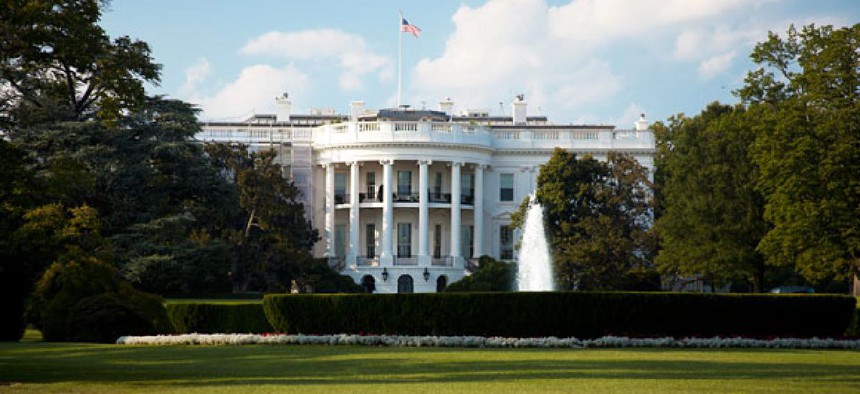
Erika Cross/Shutterstock.com
White House Unveils First-Ever Inventory of Federal Programs
Mandatory listing of about 1,600 activities is posted by department on performance.gov.
Embarking on a project long-sought by lawmakers and government efficiency experts, the Office of Management and Budget on Friday released a unique inventory of federal programs in 24 departments.
As called for in the 2010 Government Performance and Results Modernization Act, the inventory of some 1,600 programs was prepared by departments using a Government Accountability Office definition that deemed a program an “organized set of activities directed toward a common purpose or goal that an agency undertakes or proposes to carry out its responsibilities.” Each program listed includes a title, description and link to the strategic goals and objectives of the agency.
OMB spokeswoman Ari Isaacman Astles said “each agency further defined programs in a way that reflects how the agency delivers and discusses its activities with Congress and other stakeholders.”
In meeting Friday’s deadline for the inventory’s first phase, agencies posted their lists on their own websites and as discrete units on performance.gov. After agencies receive feedback on the program definitions, an updated release next year will add detail to the entries, supply links to further information and centralize them within performance.gov.
For years, many in Congress have expressed frustration at the inability of agencies to precisely itemize all the programs that receive funding. Such information has been scattered across the president’s budget, congressional budget justifications, USAspending.gov, and the Catalog of Federal Domestic Assistance. An OMB backgrounder notes that “reporting about the government’s activities is often done in a siloed and decentralized way, which inhibits coordination across agencies and cross-cutting analysis across programs.”
Sen. Tom Coburn, R-Okla., in an essay earlier this year titled “Duplication Nation,” complained that “it is nearly impossible to fully comprehend the vast expanse of federal programs that exist today. Although various sources, including USA Spending and documents released by OMB and CBO produce partial lists of various government programs, there is not an exhaustive list of federal programs. Every federal department is now administering programs that address challenges tasked to be addressed by other agencies. The government has grown so large and unmanageable, that even the experts, and the departments themselves, cannot compile a list of all federal programs within their purview.”
In releasing the first inventory, which focused on permanent programs, the White House linked it to President Obama’s ongoing efforts to eliminate duplication and waste. “In each of his five budgets, the president identified, on average, more than 170 cuts, consolidations, and savings, totaling about $25 billion each year,” it said. “The 2014 Budget proposes 215 cuts, consolidations, and savings proposals, which are projected to save more than $25 billion in 2014.”
The Obama team also cited its progress in implementing GAO recommendations for curbing duplicative programs, and referenced its pursuit -- again under the GPRA law -- of cross-agency priority goals to improve government efficiency.
The release was hailed “an important tool” by Sen. Tom Carper, D-Del., chairman of the Senate Homeland Security and Governmental Affairs Committee. “If implemented correctly, the Federal Program Inventory can also assist agencies and Congress by aligning programs with goals and desired outcomes so that these programs can be managed more efficiently.” But more work is needed, Carper said, promising to work with colleagues and OMB to “refine the list and to fully implement the Performance Act.”
Sen. Mark Warner, D-Va., also welcomed the release, saying, “We are finally getting the data we need to make a careful review of the structure of federal programs across the government to help inform decision-making in Congress. Identifying the programs at each agency is critical to making sure we reduce the amount of duplication, improve efficiencies, and ensure that programs with similar missions work together across agency silos. We will review these lists carefully, and I look forward to the addition of more program information that will help identify areas for collaboration and taxpayer savings.”
Robert Shea, an OMB official during the George W. Bush administration and now a principal with Grant Thornton LLP, called the release “a good start -- almost like a to-do list. If we have a bird’s eye view of the programs out there, we can begin to catalogue what they cost and what we’re getting in terms of results, and start diligently deciding whether these are areas ripe for consolidation or improvement or elimination,” he told Government Executive.
“There’s probably a lot of confusion as to why it takes so long for government to get a handle on what’s going on in government,” Shea added. “These recent scandals have raised the specter of a government too large to be managed. This makes the case too that if we’ve got so many different ways of achieving similar objectives, is that really manageable?”
David Walker, the former Comptroller General now chairing an advocacy coalition called the Government Transformation Initiative, praised the first effort but said more needs to be done. “The creation of a governmentwide inventory of federal programs helps facilitate the coordination of activity across the federal government,” he said in a statement. “We already have numerous compilations of government programs with the Federal Activities Inventory Reform Act, GAO Reports and inspector general reviews, but they lack actionable recommendations to ensure the government is operating as efficiently and effectively as possible.”
The inventory, Walker said, demonstrates “the need for an independent task force or commission to make specific and actionable recommendations to improve the economy, efficiency, effectiveness, and credibility of the federal government.”







